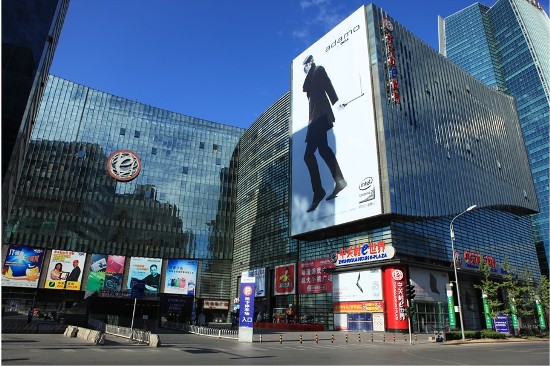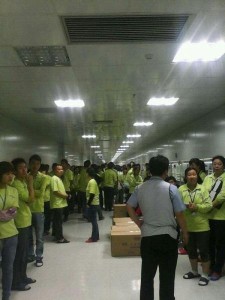Shenzhen: The Cradle of the iPhone, and Also its Huge Resale Market
Posted: 09/18/2014 6:22 pm The heavily-anticipated iPhone 6, Apple’s newest smartphone, goes on sale today (September 19) in Hong Kong, but not Mainland China. That means demand for the smartphone has increased substantially, with smuggled versions already being listed for RMB 10,000 and up.
The heavily-anticipated iPhone 6, Apple’s newest smartphone, goes on sale today (September 19) in Hong Kong, but not Mainland China. That means demand for the smartphone has increased substantially, with smuggled versions already being listed for RMB 10,000 and up.
But you don’t have to pay that if you don’t need the latest and greatest Apple gadget. Shenzhen houses the massive Foxconn factories where Apple products are produced, but it’s also home to a thriving marketplace that sells these same phones, albeit several models behind.
The arrival of the iPhone 6 has dropped the price of the iPhone 4 down to RMB 1,500 at this market, and budget-conscious consumers are flocking to Open World Communication City in Shenzhen’s Huaqiang North District to purchase refurbished phones.
Older models like the iPhone 4 are popular among many Chinese because they are still Apple phones, but they are cheap.
READ: Taiwan TV: “Chinese Blue Collar Workers Can’t Afford Home Computers”
Huaqiang North District has become an extremely popular place to purchase cheap and fake (shanzhai) electronics after a resurgence in 2010. It has now become a ”barometer” of the electronics economy.
Open World Communication City is full of stalls packed with old iPhones in various conditions, some with cracked screens, and others held together by rubber bands. The mall is equally full of shops that offer repair services for cracked screens and destroyed casing for those who want a fixer-upper.
A seller named Lu sells refurbished iPhone 4′s in bulk at RMB 1,000 each (US $160). Another offers re-polished displays for the iPhone 5 at RMB 170 (US $28).
READ: Unreleased Hong Kong and US Versions of iPhone 6 Already on Sale in Beijing for US$4,500
However, many of the clients that frequent Open World Communication City aren’t individual consumers, but sellers hoping to resell a refurbished phone at a profit. As sellers sell to sellers, the origin of many of these old phones gets lost in the shuffle and dealers won’t disclose where they get their stock from.
US versions of iPhones going on resale in China may come from any number of sources, such as online reseller Gazelle, which revealed that half of its iPhone stock is resold to “emerging markets”.
As nebulous as the source from which old iPhones are gathered, the products and services offered at the mall and throughout Huaqiang North District are even more suspect. A photo BBS post depicts the method by which an iPhone 5 can be altered to resemble an iPhone 5s, all while emphasizing that it is taking place in Huaqiang North (seen above).
Even though Chinese conservative values emphasize the importance of relationships through business and blood, the social value of owning a status symbol like an iPhone—no matter the model—make it more valuable than diamonds.
Related:
- Woman Claims iPhone 5s Burned Her Face, And Has Photos to Prove It
- Kids in GZ ruining their eyesight by spending too much time on their iPads
- Feeling Depressed and Suicidal in China? There’s an App For That
- Student Behind Chinese Android Virus Nabbed in Shenzhen
- Massive Recruitment Drive Underway in China To Build Apple’s Next iPhone
Photos: Qiyexun, Baidu Tieba



















